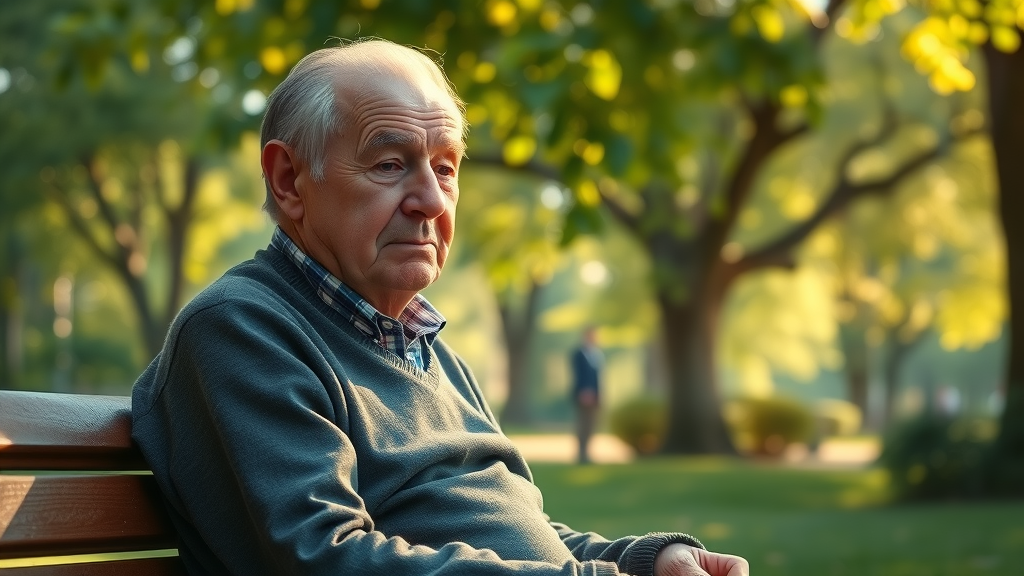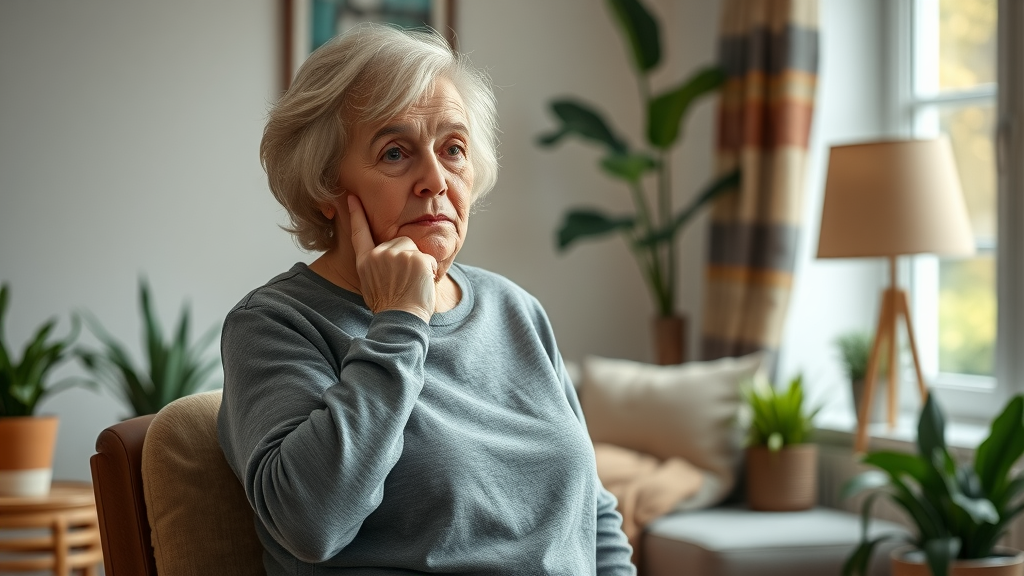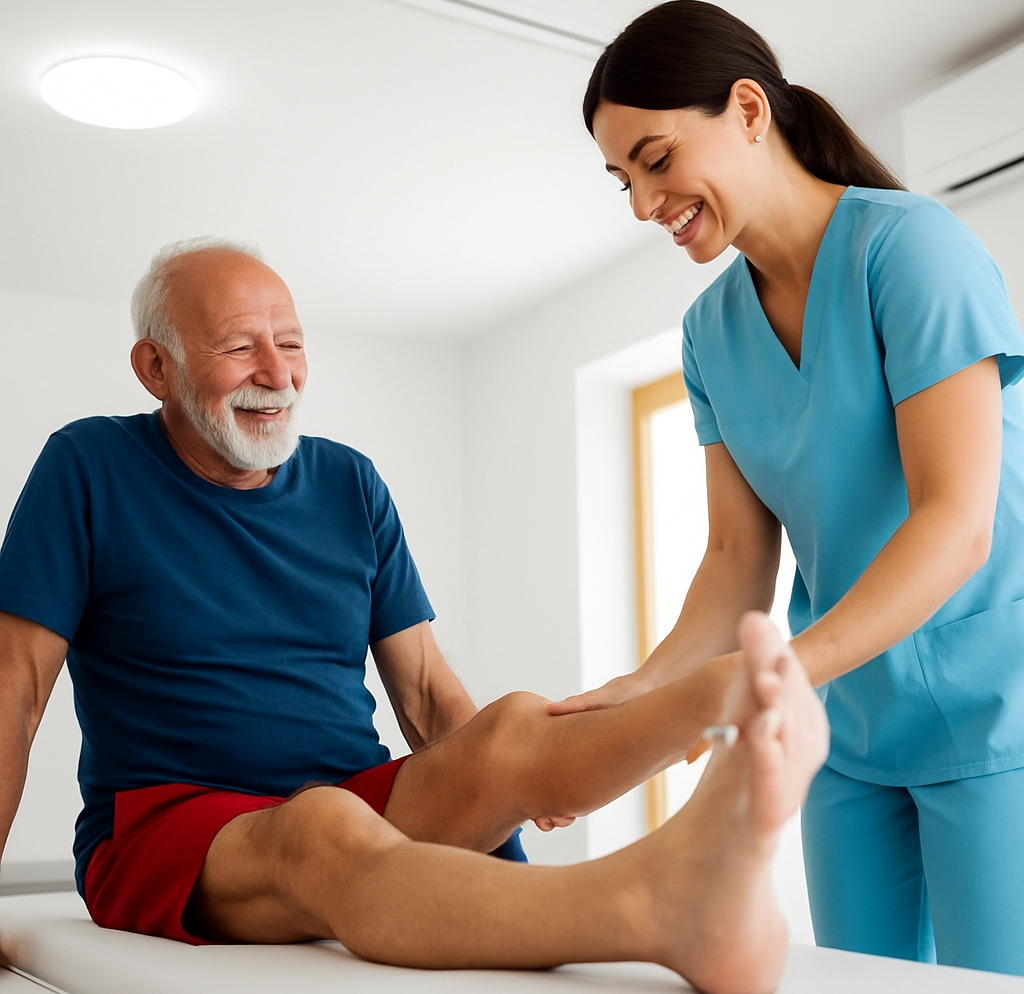Did you know that up to one in three adults over 60 experience significant sarcopenia, yet most don’t recognize the signs until much of their muscle strength is gone? Sarcopenia—a condition that causes a gradual loss of muscle mass and strength—quietly robs millions of older adults of their independence, energy, and ability to enjoy life. But here’s the good news: understanding sarcopenia and taking the right steps early can help you rebuild your body’s strength, maintain your independence, and prevent further decline. This comprehensive guide empowers you or your loved ones with everything you need to know about tackling and overcoming muscle loss as an older adult.
The Startling Truth About Sarcopenia in Older Adults
"Experts estimate that up to one in three adults over 60 suffer from significant sarcopenia, yet few recognize its signs until strength is already diminished."

Why Sarcopenia is a Silent Epidemic Among Older Adults
Sarcopenia is often called the “silent epidemic” because it creeps up on older adults without clear warning. Unlike visible injuries or acute illnesses, sarcopenia develops gradually—starting as early as your 40s or 50s but accelerating after age 60. Many older people attribute gradual muscle loss to normal aging, when in reality, sarcopenia is a medical condition that severely impacts quality of life if left unchecked. Because it’s not painful at first, few notice the subtle signs: trouble standing from a chair, losing grip strength, or a decline in walking speed.
The silent nature of sarcopenia is exactly what makes it so dangerous—and why awareness and early action are essential. Declining muscle mass doesn’t just affect physical performance; it can undermine body composition, increase fat mass, and fuel a higher risk of falls, fractures, and hospitalization. For older adults, recognizing the condition early is crucial—not only to regain lost muscle strength, but also to preserve independence, lower healthcare costs, and enjoy a full, active life.
What You'll Learn in This Guide
What sarcopenia is and why it matters for older adults
Warning signs and early symptoms of sarcopenia
Evidence-based strategies to regain muscle strength and prevent further muscle loss
The role of nutrition, resistance training, and physical activity
Expert insights, real-life quotes, and practical next steps
Understanding Sarcopenia: Causes, Risk Factors, and Prevalence

What is Sarcopenia?
Sarcopenia is a progressive condition characterized by the loss of skeletal muscle mass, muscle strength, and physical function. While some decline in muscle mass and strength is expected with age, sarcopenia represents a pathological acceleration of this process, putting older adults at a higher risk for impaired mobility, disability, and even chronic disease. Over time, low muscle mass can lead to a reduction in body mass, changes in body composition, and an increase in fat mass—sometimes leading to sarcopenic obesity (where muscle loss is accompanied by fat gain).
The core problem in sarcopenia isn’t just about muscle tissue getting weaker—it’s about the loss of muscle fibers, decrease in muscle strength, and the body’s declining ability to generate the growth factors needed for muscle regeneration. This makes it much harder for older adults to recover from illness, injury, or even a minor slip. Ultimately, the seriousness of sarcopenia lies in its ability to affect not only physical performance but also every part of an older adult’s daily life—from walking speed to independence and quality of life.
Key Risk Factors for Sarcopenia in Older Adults
Age-related decline in muscle strength: Natural reduction in skeletal muscle begins as early as the fourth decade of life, but accelerates considerably in older adults after age 60. This makes chronological age one of the biggest risk factors for sarcopenia.
Lack of physical activity: Sedentary lifestyles dramatically increase the risk of muscle loss. Without regular physical activity and especially resistance training, both muscle fibers and strength diminish more rapidly in older adults.
Nutritional deficiencies: Insufficient protein, low vitamin D, and poor caloric intake contribute to low muscle mass and impaired muscle regeneration. These deficiencies are common in older people due to changes in appetite, chewing issues, or underlying chronic disease.
Chronic illness and inflammation: Chronic disease states such as diabetes, heart failure, or persistent inflammation place additional strain on muscle health, accelerating the breakdown of muscle tissue and inhibiting recovery.
How Common is Sarcopenia Among Older Adults?
Sarcopenia affects a significant portion of the senior population, but its true prevalence is often underestimated due to underdiagnosis. Studies indicate that up to 33% (one in three) of adults over 60 show signs of sarcopenia, with rates increasing sharply in those over age 80. Yet because its symptoms are often subtle and attributed to “normal” aging, thousands go undiagnosed until muscle strength and daily function are seriously impaired. Furthermore, populations with higher rates of chronic disease, inadequate nutrition, and less access to exercise resources are at even greater risk—a stark reminder of why routine screening and early intervention matter for all older adults.
Prevalence Rates of Sarcopenia by Age Group |
|
Age Group |
Estimated Prevalence |
|---|---|
60–69 years |
10–13% |
70–79 years |
18–24% |
80+ years |
30–50% |
Recognizing the Signs: Symptoms and Diagnosis of Sarcopenia
Warning Signs and Symptoms of Muscle Loss

The earliest symptoms of sarcopenia are often subtle but telling. Loss of muscle mass may first manifest as general weakness, reduced grip strength (difficulty opening jars or carrying groceries), or trouble standing up from a low chair. Many older adults report fatigue, decreased walking speed, and occasional stumbling. As sarcopenia progresses, low muscle strength leads to a greater risk of falls—which is a leading cause of hospitalization and disability in the elderly population.
Importantly, sarcopenia doesn’t just impact physical function. Many people experience a decline in balance, slower reaction times, and even lower motivation to be active, which in turn fuels further muscle loss. The cycle is dangerous but reversible—if the signs are recognized and addressed promptly.
How is Sarcopenia Diagnosed in Older Adults?
Diagnosis starts with clinical suspicion based on symptoms—such as difficulty with daily tasks, a history of falls, or noticeable muscle loss. Healthcare providers may perform routine mobility and strength tests, such as measuring grip strength with a dynamometer, assessing walking speed over a set distance, or observing the ability to rise from a chair unassisted. For a definitive diagnosis, additional measurements of body composition (such as dual-energy X-ray absorptiometry) can assess low muscle mass in relation to fat mass.
Blood tests may also be used to rule out nutritional deficiencies or underlying chronic disease. Because early identification significantly improves outcomes, routine assessments should be a part of every older adult’s check-up.
“Early identification of sarcopenia is critical—routine mobility tests can detect subtle muscle loss before it leads to disability.” – Geriatrician Dr. Howard
Why Muscle Strength Matters for Older Adults

Consequences of Untreated Sarcopenia and Muscle Weakness
Increased risk of falls and fractures: Weak muscle fibers and impaired balance put older adults at a substantially higher risk of injuries and hospitalization.
Loss of independence: Muscle loss erodes the ability to perform essential activities like dressing, bathing, and shopping independently.
Reduced quality of life: Sarcopenia often leads to less socialization, more isolation, and worsened mood and motivation.
Higher healthcare costs: Repeated falls and loss of mobility lead to greater reliance on medical care, therapy, and long-term care facilities.
In addition to increasing physical risks, sarcopenia severely restricts social and emotional well-being. The inability to move confidently, engage in beloved activities, or maintain autonomy may result in anxiety and depression for many older adults. Preventing or reversing muscle loss is not just a matter of physical health—it’s crucial to preserving identity and enjoyment of life in older age.
How Physical Activity and Resistance Training Prevent Sarcopenia
The Evidence: Resistance Training for Muscle Strength

Resistance training is the single most effective intervention for reversing muscle loss and regaining muscle strength in older adults. Scientific studies repeatedly show that regular resistance exercise—involving free weights, resistance bands, or even bodyweight movements—can stimulate the regrowth of muscle fibers, enhance grip strength, and significantly improve physical function. Importantly, these benefits are not limited by age; even adults in their 70s and 80s can rebuild lost muscle mass and improve walking speed with well-designed, progressive programs.
This type of physical activity amplifies the body’s natural growth factors and counteracts chronic inflammation, which are crucial for rebuilding lost mass and strength. In fact, engaging in resistance training two to three times per week is associated with marked improvements in muscle tissue health and a reduced risk of falls, disability, and even all-cause mortality for older adults.
Physical Activity Recommendations for Older Adults
Strength training 2–3 times per week: Focus on all major muscle groups with safe, progressive resistance exercises tailored to your fitness level.
Balance and flexibility exercises: Yoga, tai chi, and targeted stretching help prevent falls and improve mobility, making life easier and safer.
Daily moderate-intensity walking or activity: Brisk walking, cycling, or low-impact aerobic exercises support overall physical function and mental health.
Combining resistance exercise with daily movement and balance work forms the foundation of every evidence-based plan to prevent sarcopenia. Always consult your healthcare provider before beginning a new program—especially if you have existing chronic disease or mobility limitations. Personalized plans maximize benefits and minimize injury risk, ensuring long-term success.
Video Recommendation:
Watch a physical therapist demonstrate safe resistance training moves for older adults.
Essential Nutrition for Sarcopenia Prevention
Key Nutrients for Muscle Health
Daily Protein and Nutrient Requirements for Older Adults |
||
Nutrient |
Recommended Amount |
Role in Muscle Health |
|---|---|---|
Protein |
1.0–1.2g/kg body weight |
Muscle repair and growth |
Vitamin D |
800–1000 IU |
Enhances muscle function and strength |
Omega-3 fatty acids |
1–2g |
Reduces inflammation, supports muscle tissue |
Calcium |
1200 mg |
Bone and muscle function |

Dietary protein is the cornerstone of sarcopenia prevention. Older adults need more protein than younger adults—at least 1.0–1.2 grams per kilogram of body weight daily—to stimulate optimal muscle regeneration. Adequate vitamin D and omega-3 intake further support muscle health and reduce chronic inflammation, while calcium keeps both bones and muscle tissue strong. Nutritional deficiencies, especially low protein and vitamin D, are among the most common and correctable risk factors for sarcopenia in older people.
Supplementation may be advisable for those who have difficulty achieving these targets through food alone. Consulting a registered dietitian ensures a personalized plan that adapts to changing appetite, dietary preferences, and medical needs.
Sample Sarcopenia-Fighting Meal Plan
Breakfast: Greek yogurt with berries and walnuts
Lunch: Grilled chicken breast, quinoa, leafy greens salad
Afternoon Snack: Cottage cheese with sliced peaches
Dinner: Baked salmon, sweet potato, steamed broccoli
Evening Snack: Hard-boiled egg or a protein smoothie
"Sufficient dietary protein is absolutely vital—without it, muscle regeneration simply can’t occur." – Registered Dietitian Mary Lin
Sarcopenia Treatment: Medical and Lifestyle Interventions

How Medical Professionals Treat Sarcopenia
Effective treatment of sarcopenia typically combines lifestyle modifications and medical interventions. Physicians may assess for underlying chronic disease (such as diabetes, anemia, or endocrine disorders) that exacerbate muscle loss, and tailor a plan that addresses both primary muscle degeneration and secondary causes. Treatment strategies often include resistance training prescription, physical therapy, targeted nutrition counseling, and correction of vitamin D or other deficiencies.
In certain cases, medication adjustments or supplements may be recommended to optimize muscle performance or slow the progression of muscle decline. Ongoing monitoring ensures treatments are working as intended and can be adjusted based on progress and individual needs.
Creating a Comprehensive Plan: Exercise, Diet, and Lifestyle
Personalized resistance training routines
Nutrition counseling
Medication review
Vitamin D supplementation
Recovering from sarcopenia requires a holistic approach. Working with a team that includes physical therapists, dietitians, and primary care providers can help older adults develop a plan that’s safe, effective, and sustainable. Regular follow-up sessions improve accountability and allow for continual progress toward regaining muscle mass and strength.
Prevent Sarcopenia: Tips and Strategies for Older Adults

Start low-impact strength training today
Monitor dietary protein and calorie intake
Check in regularly with your healthcare provider
Incorporate balance-building and aerobic activities
The most promising outcomes occur when intervention begins early. Even modest increases in physical activity or dietary improvements can yield measurable benefits for muscle health and overall quality of life. The key is consistency—take small steps, stay engaged, and reach out for support when needed to prevent sarcopenia from taking hold.
People Also Ask About Sarcopenia
How do you reverse sarcopenia?
To reverse sarcopenia, combine regular resistance training with adequate protein intake, ensure sufficient vitamin D, and manage underlying health conditions. Early intervention and individualized plans offer the best results.
What are the signs of sarcopenia?
Signs include loss of muscle mass, decreased muscle strength, slower walking speed, fatigue, and increased risk of falls. Early signs are often subtle but detectable with assessment.
What is life expectancy with sarcopenia?
Sarcopenia increases the risk of disability and mortality, but effective interventions can improve outcomes. Life expectancy varies depending on severity and coexisting health issues.
Can a 70 year old man regain muscle mass?
Yes, older adults—even over 70—can regain muscle mass with the right combination of resistance training, dietary interventions, and lifestyle modifications.
Frequently Asked Questions About Sarcopenia
Is sarcopenia inevitable with aging?
What tests confirm muscle loss?
Are there medications for sarcopenia?
How soon will I see results from resistance training?
Does sarcopenia affect women differently than men?
Key Takeaways: Reclaiming Muscle Strength After Sarcopenia

Sarcopenia is common but manageable
Muscle strength is vital for independence
Early intervention makes a difference
Nutrition and exercise are non-negotiable
Consistent action leads to significant gains
Conclusion: Taking Charge of Sarcopenia as an Older Adult
Sarcopenia is not an inevitable part of aging. With knowledge, commitment, and support, older adults can rebuild strength, safeguard independence, and enjoy active, healthy lives.
Subscribe for More Senior Health Insights

Subscribe to the Silver Surfer for more Senior related articles.
 Add Row
Add Row 

 Add
Add 


Write A Comment